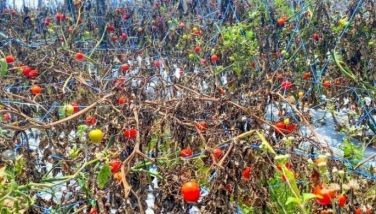Tree of the Month – Kubi(Artocarpus nitidus)
Physical Characteristics
Kubi is a tree reaching a height of about 20 meters and a diameter of about 60 centimeters.
Its bark is yellowish brown and flaky. The inner bark is pinkish and exudes white sap.
The leaf is simple, glabrous, alternate, oblong, and acute. It grows about six to 10 centimeters long, and its bases are either cuneate or rounded. The leaf’s petioles measure six to 10 centimeters long and could be glabrous or subcinerous. The lateral nerves measure four to eight centimeters in length and less prominent than the midribs. The leaf’s reticulations are quite evident.
Kubi’s fruit has many seeds, is irregular or rugose, and is covered with yellow brown or gray tomentum.
Distribution
Kubi is found in Northern Luzon to Mindoro, Tablas, and Cebu.
Contemporary Use
The wood can be used for light construction, while the trunk serves as posts for bridges. The fruits are edible.
Traditional Use
The sap extracted from the bark is used to cure leprosy.
How to plant your kubi seedling
Clear the area where you want to plant your seedling of unwanted weeds and debris. Make sure that a one-meter radius is kept free from other vegetation. Dig a plant hole with dimensions of at least 20 cm x 20 cm x 20 cm. Plant the seedling at proper depth. Root collar should be at level with or a little below the ground surface, with the seedling oriented upward. Fill the hole with top or garden soil and press soil firmly around the base of the seedling. In plantation-making, maintain a two-meter distance between seedlings if they are planted in a row of a three-meter distance from one strip to the next strip.
How to take care of your kubi seedling
Remove grass and other unwanted vegetation and cultivate the soil around the base of the seedling (50-centimeter radius) once in every quarter for two to three years. Place mulch around the base of the seedling (maintaining the 50-centimeter radius and using cut grass, leaves, and other suitable materials as mulch base). Prune the branches at most 50 percent of the crown depth, preferably during dry season, and ensure that when pruning you do not injure the bark. Remove infected or infested vegetation nearby to stop plant diseases from spreading and contaminating your seedling. Monitor regularly the growth of the seedling for presence of pests and diseases.
Data about native tree species are featured by the Ramon Aboitiz Foundation Inc. For comments and suggestions, e-mail [email protected]. Learn about other native trees, visit www.rafi.org.ph/greenin-philippines. (FREEMAN)
- Latest



























